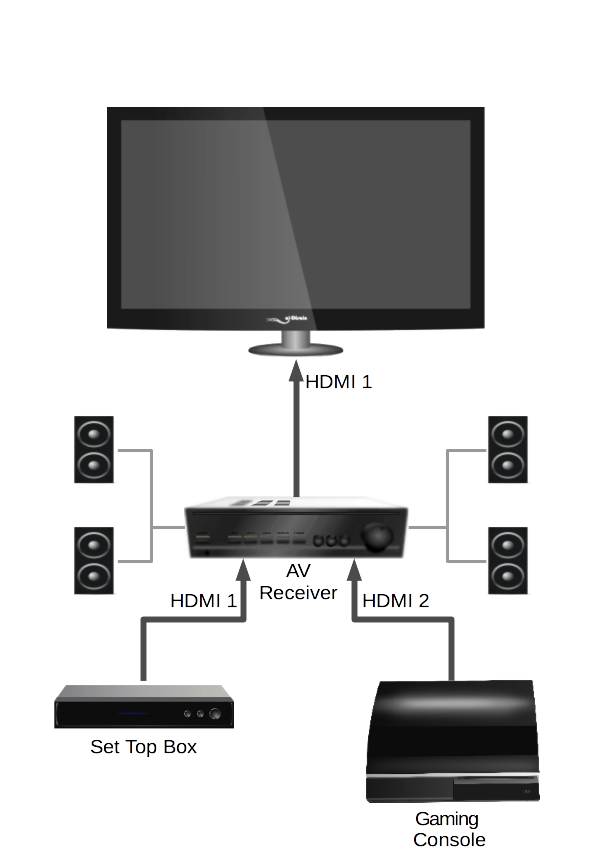This feature is typical on the analog world: the voltage of a single PIN (in this case PIN 8, as shown above) would inform the receiver of the desired information. In this case, the following states are possible:
- 0-2V – Device disconnected;
- 5-8V – Device ON – 16:9 picture format:
- 9.5-12V – Device ON – 4:3 picture format.
Although this brings a small improvement, it is a significant one, as it allows the user to skip one step: the TV automatically switches to the the last device being turned on, which from that point on, the user may rely on the device remote. The TV remote may not be used unless to switch ON and OFF. Not only that, but in theory, it should be possible for TVs ao automatically turn themselves ON upon having a connected device, although I’ve never seen this implemented…
Now, this information albeit useful is not that useful, and in no instance the user get away with any remote, and also, it is completely unidirectional: it’s always from the source device to the TV. However, the curious reader would detect two interesting pins: DATA and DATA1. Back in the 70’s when SCART was first designed, no one had an universal protocol to transmit data over SCART, and a few years later two different standards appeared: D2B from Philips (also known as IEC 61030) and AV.Link from Thomson (also known as EN 50157). D2B was a far more advanced and complex protocol, which allowed for multi-device communication but no one ever standardised a high level AV protocol over it, so it never reacher widespread support outside the Philips AV ecosystem, and eventually found it’s raison d’etat on the automotive industry.
AV.Link is a whole different beast. Not only was specifically designed to manage AV devices, it follows the AV architecture: one single TV is the master device, connected by some optional AV switches to source devices. It’s messages carry some familiar naming structure, as you can find “Play”, “Stop” and “Volume UP” messages. This is a protocol which targeted the replacement of all those multiple remotes into a single master remote: the TV remote. However, there were a series of roadblocks:
- Most TV sets were still mostly analog based, and as such doing message manipulation and control was completely outside of the capabilities of most devices;
- It was only available over SCART, which meant European and Japanese markets meaning not US adoption which somewhat helped kill the idea;
- Both Thomson and Philips have a number of patents on the AV management protocols which meant that for anyone to implement any of the protocols royalties would need to be paid to both companies, regardless on the exact implementation. If you consider that SCART is mostly patent free, this represented a significant roadblock.
At the end, AV.Link over SCART never saw any significant adoption, although it was featured on some high end devices from Panasonic and SONY, there were not enough source devices to make it relevant. Fortunately, this was not the end of the road for AV.Link, as it was recycled into HDMI-CEC.

